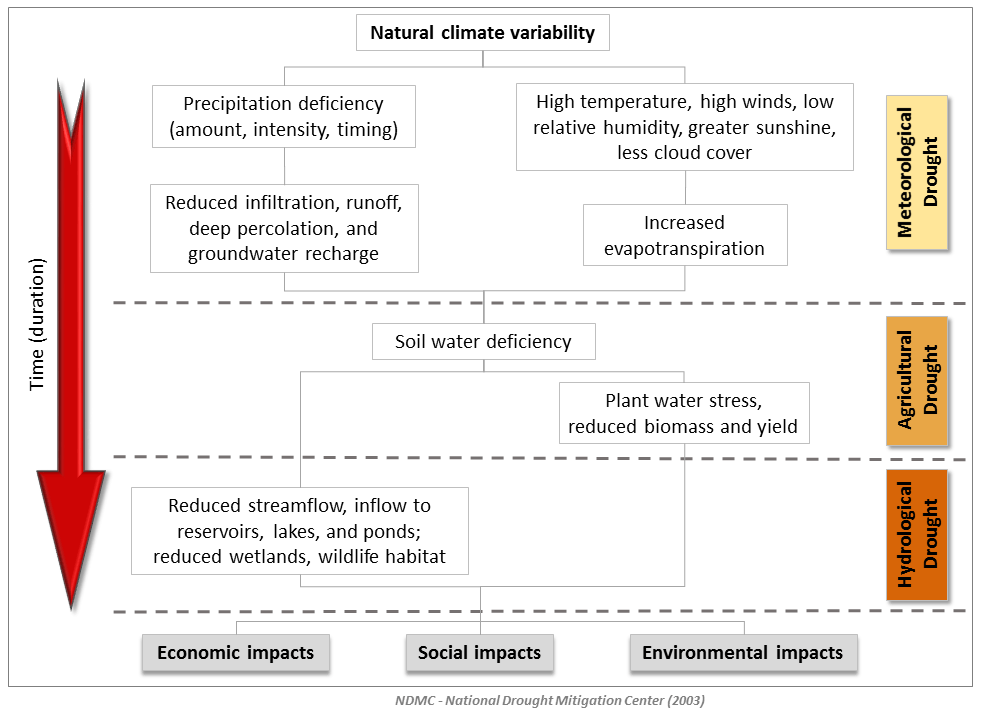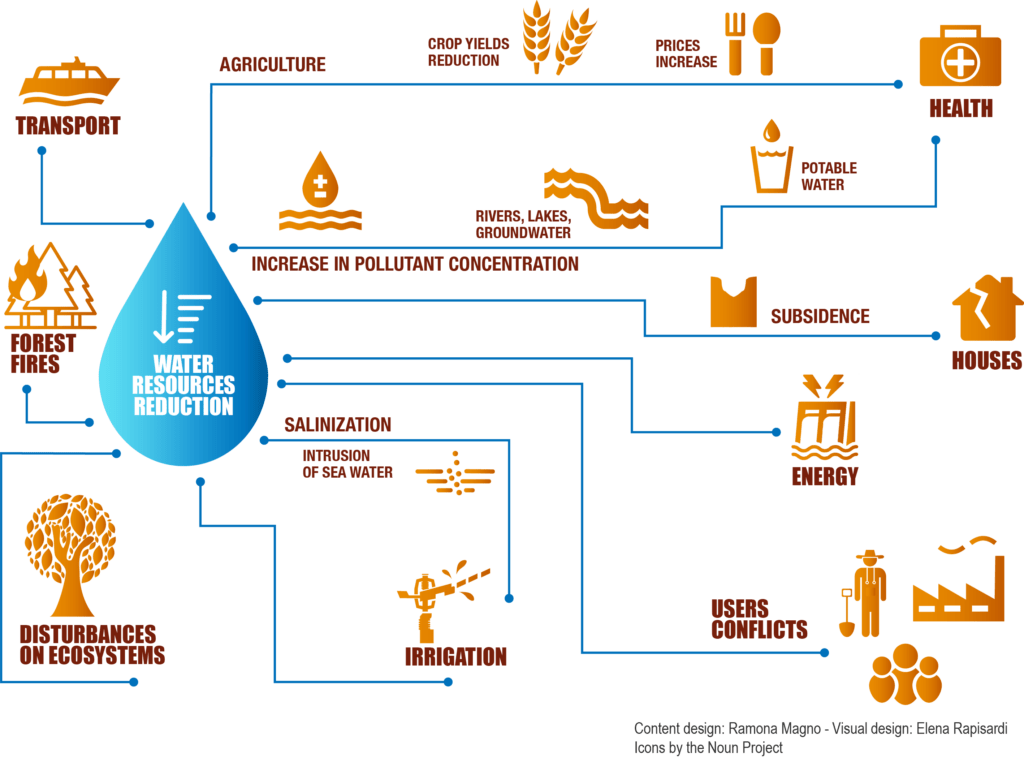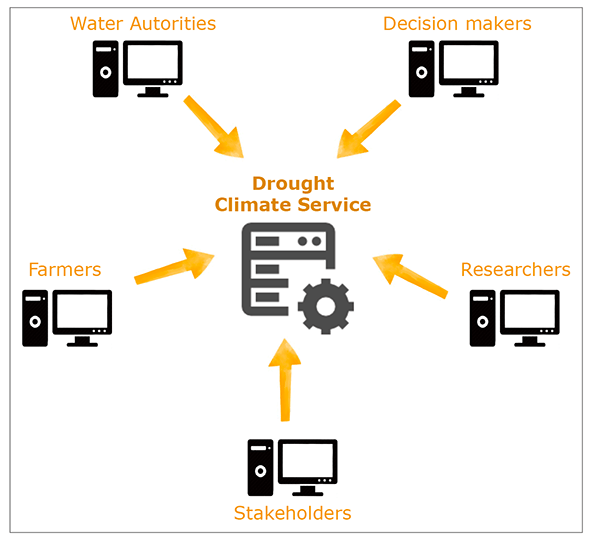The Phenomenon
Drought is a normal and recurrent feature of climate, which can virtually occur in all climatic zones and is related to the concept of temporary water deficit. Its impacts can vary from region to region, depending on its characteristics and water demand for several purposes.
Characteristics of Drought
Drought can have different impacts depending on its characteristics.
Duration
Intensity
Geographic extent
Frequency
Slow Onset
Types of drought
For this reason often drought is identified in four types: meteorological, agricultural, hydrological and socio-economic (Wilhite, 2000).
Wilhite, D.A., 2000. “Drought as a natural hazard: concepts and definitions” in Drought: A Global Assessment, Volume I, D. A. Wilhite (ed.). Routledge, London, pp. 3-18.

Meteorological Drought
Reduction of precipitation below the climatological average (at least 30 years), for a specified period (e.g. days, months, years) in a specified area
Agricultural Drought
Decreasing of water availability (due to rainfall shortage and increasing of evapotranspiration) in the root zone, that impacts on the optimal crop growth (specially in some critical phenological phases), causing the yields reduction.
Hydrological Drought
Involves a reduction in water resources (streamflows, lake levels, groundwater, underground aquifers) below a specified level for a given period of time, due to a long-lasting precipitation reduction.
Socio-Economic Drought
Socio-economic drought is associated with the supply/demand of water related to some economic goods and needs. During particularly intense and extended droughts, water allocation for common human activities can be compromised.
WATER SHORTAGE AND ITS IMPACTS

Why a Drought Climate Service
Improve "Readiness"

Diverse users and needs
Climate Service is not a simple data sharing, but a producer of useful information.
To be effective, the Drought Climate Service has to respond to different priorities and users’ needs, following some main requirements:
- Information continuously updated and timely delivered
- Expandable platform and on-demand services
- Products appropriate to the users’ competences and technical skills



